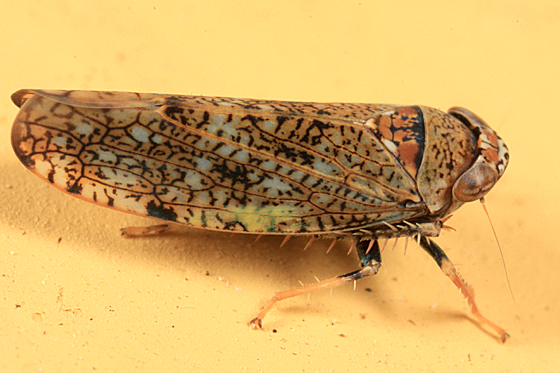Biosecurity threat, not present in Australia
Orientus ishidae (Matsumura)
Mosaic leafhopper
Caution
Many of the insects depicted on these pages are outwardly similar and you should not use photographs as the sole means of identification. These pages form part of a scientific key which will assist a trained entomologist to identify the species accurately.
Orientus ishidae (Matsumura, 1902)
Common Name: Mosaic leafhopper, Japanese leafhopper
Subfamily/Tribe: Deltocephalinae/Athysanini
Distribution: A native to Japan, South Korea, North Korea, Taiwan and the Philippines, Orientus ishidae has been introduced into the United States of America (circa 1967), Canada (1993), Italy (1998), Switzerland (2000), Germany (2002), Slovenia (2002), Czech Republic (2004), Austria (2007), Hungary (2010), France (2010), United Kingdom (2011), Netherlands (2015), Poland (2017) and Romania (2017).
Economic Status: Orientus ishidae is polyphagous and can feed on a range of woody plants but the most serious damage is caused to grapevines. It is a vector of grapevine flavescence dorée phytoplasma which causes grapevine yellows disease in vineyards (e.g., Lesio et al. 2016).
Notes: Orientus ishidae appears to be distinctive in its patterning. Australia has many similarly patterned native species within Athysanini and other Deltocephalinae tribes. Orientus ishidae is a rapidly spreading pest through Europe since originally introduced in Italy ~ 20 years ago. It has also readily established in and spread through North America. It is likely that introductions and dispersal have been assisted by anthropogenic movements of plant material (e.g., Koczor et al. 2013). Orientus ishidae is highly likely to be able to establish and spread in Australia if given the chance.

Image: Tom Murray (used with permission)
CLICK HERE for more images
